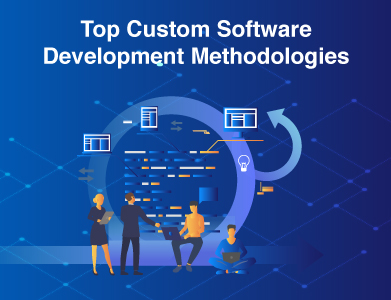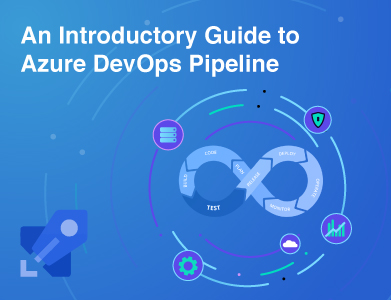Expertise
Managing online payments can be a real challenge. Maybe you're running an e-commerce store, launching a SaaS platform, or scaling your digital marketplace, and the current payment solutions just aren’t cutting it. Fees are piling up, transaction times are slower than you’d like, and customer trust is shaky. What if there was a way to get more control, lower costs, and deliver a better experience for your users?
This is where custom payment gateway can help. This guide will walk you through everything you need to know—from understanding the nuts and bolts of how payment gateways work to exploring if building your own solution makes sense for you. By the end, you’ll have a clear idea of the steps, costs, and benefits involved in payment gateway development, plus some useful insight into whether it's a worthwhile investment for your business.
So, if you’re tired of the limitations of cookie-cutter payment systems and want to explore your options, you’re in the right place.
Why Develop a Payment Gateway?
When it comes to handling payments, one size does not fit all. Using a third-party payment gateway like Stripe or PayPal can work for many businesses, but they come with downsides: recurring fees, limited flexibility, and a lack of control over the entire payment experience. Plus, these solutions don’t always adapt well when your needs become more complex or when your customer base starts to grow globally.
By developing your own payment gateway, you can tailor everything to suit your needs. You’re able to cut out the intermediary, lower your transaction fees, and even monetize your payment gateway by offering it to others. And let’s not forget about brand consistency—custom gateways mean you control every little piece of the user experience, from how a customer makes a purchase to how their information is stored.
And the market? It’s booming. The global payment gateway market is expected to skyrocket from $31 billion in 2023 to $161 billion by 2032. Businesses that get in on custom gateway development now can carve out a valuable piece of that growing pie.
The Basics: What is a Payment Gateway and How Does it Work?
At its core, a payment gateway is like a digital cashier that processes online payments for businesses. It acts as a bridge between your customers and the payment processors. Here’s how it works:
Customer Initiates a Purchase
Your customer places an order on your website and enters their payment information.
Data Encryption
The payment gateway encrypts this sensitive information to keep it safe.
Authorization Request
The data is sent to the payment processor to verify whether the transaction can go through.
Transaction Status
If approved, the money is moved from your customer's bank to your merchant account.
Completion
The customer is notified about whether the payment was successful.
All this happens in mere seconds, but those seconds can make or break customer trust. A well-built gateway ensures transactions are seamless, secure, and fast, giving your customers confidence every time they click "Pay Now."
Should You Build Your Own Payment Gateway?
So, how do you decide if creating a custom payment gateway is the right move? Here are some situations where it might make sense:
You Need Unique Capabilities
Perhaps you need support for multiple currencies, crypto payments, or sophisticated recurring billing features. Most off-the-shelf options fall short in these areas.
You’re Scaling Fast
Growth brings complexity. You need a payment solution that scales and evolves as you do.
You Want to Monetize Payments
If you have a digital marketplace, you could offer your payment services to other merchants. That’s a new revenue stream waiting to be tapped.
High Transaction Volume
If you’re handling a high volume of transactions, those third-party fees can really cut into your profits.
Of course, it’s not without its challenges—building a custom gateway takes time, effort, and a fair chunk of change. On average, it can take 6-11 months and cost anywhere between $100,000 to $300,000+. But if done right, it’s an investment that pays off in savings, user trust, and greater control over your financial operations.
Key Components of Payment Gateway Development
If you’ve decided to go ahead, let’s dive into the essential features and how to build them:
1. Fraud Protection
Every payment gateway needs robust security to keep fraudsters at bay. This usually includes:
- AI-driven Fraud Detection Real-time monitoring of transactions using machine learning to flag suspicious activity.
- Tokenization Replacing sensitive card information with secure tokens to make data breaches far less damaging.
2. Recurring Payments and Flexibility
If your business involves subscriptions, recurring payments are a must-have feature. This helps automatically bill your customers, simplifying their experience and boosting your cash flow.
3. Seamless Integration and APIs
You’ll want your gateway to play nice with other parts of your business—whether that’s your accounting software, e-commerce platform, or CRM. A robust API is crucial here, providing the bridge to link all the pieces together.
4. Scalability
When it comes to online payments, downtime is a nightmare. You need a gateway that scales to handle peak times (like Black Friday sales) while staying responsive. This means building scalable architecture from the start.
Step-by-Step: How to Build a Payment Gateway
Building a payment gateway isn’t something you can just wing. There’s a process to follow, and here’s how it typically goes:
Step 1: Feasibility Study (1–3 Weeks)
The first step is understanding if this project is actually feasible. You’ll need a solid plan that considers your current payment volume, potential benefits, and ROI. Bringing in a business analyst at this point is crucial—they'll help weigh the costs against the rewards.
Step 2: Design and Tech Stack Planning (4–7 Weeks)
Next, you’ll design the software and pick your technology stack. The tech stack matters because it affects scalability and security. Popular choices are Java, Python, or Node.js for backend and react for frontend. You’ll also need a secure database, like MySQL or MongoDB.
Step 3: Development (4–7 Months)
This is where the heavy lifting happens. You’re looking at creating:
- Payment Logic The core functions that process payments.
- Integration APIs So, the gateway can connect to other services.
- Customer Interface The checkout page customers will see.
Throughout development, you’ll be testing constantly to ensure the gateway’s safe, reliable, and user-friendly. A DevOps engineer will make sure it all stays stable during deployment.
Step 4: Deployment and Integration (1–2 Weeks)
Deployment involves moving the gateway to production servers and linking it with your existing systems—accounting software, CRMs, and more. This is a critical step for making sure payments flow smoothly across your business operations.
Step 5: Ongoing Maintenance
You don’t just build it and leave it. Maintenance is ongoing, from monitoring the system for issues to adding new features as your needs grow. Compliance standards, like PCI DSS and PSD2, also need to be updated regularly.
Costs and Timelines
Let’s talk about numbers. Developing a payment gateway costs between $100,000 to $300,000+ depending on complexity. The timeline is about 6 to 11 months on average. It’s a lot but compared to paying 3-5% per transaction in fees, it starts to make financial sense if you’re at scale.
Challenges in Payment Gateway Development
Building a custom gateway isn’t easy. Here are the major roadblocks you should be ready for:
- Compliance Hassles Adhering to PCI DSS and other regulations is a must, and compliance is an ongoing challenge.
- High Development Costs The upfront investment can be hefty, which makes careful planning essential.
- Fraud and Security Threats Payment fraud is evolving. Your system must stay one step ahead, which means investing in ongoing security upgrades.
Conclusion: Is It Worth It?
If you’re at the point where high fees, lack of flexibility, and security concerns are holding your business back, building your own payment gateway could be the solution that gives you a real edge. Yes, it takes a hefty investment in both money and time, but the payoff—full control, lower fees, and brand cohesion—could make it all worthwhile.
As you move forward, keep in mind that it’s about crafting a solution that’s right for you and your customers. A custom payment gateway lets you own that piece of the user experience, which means happier customers and a healthier bottom line.
If building your own payment gateway sounds like a fit for your growing business, make sure you have a clear plan, a strong team, and the right tech partners to help you along the way.











